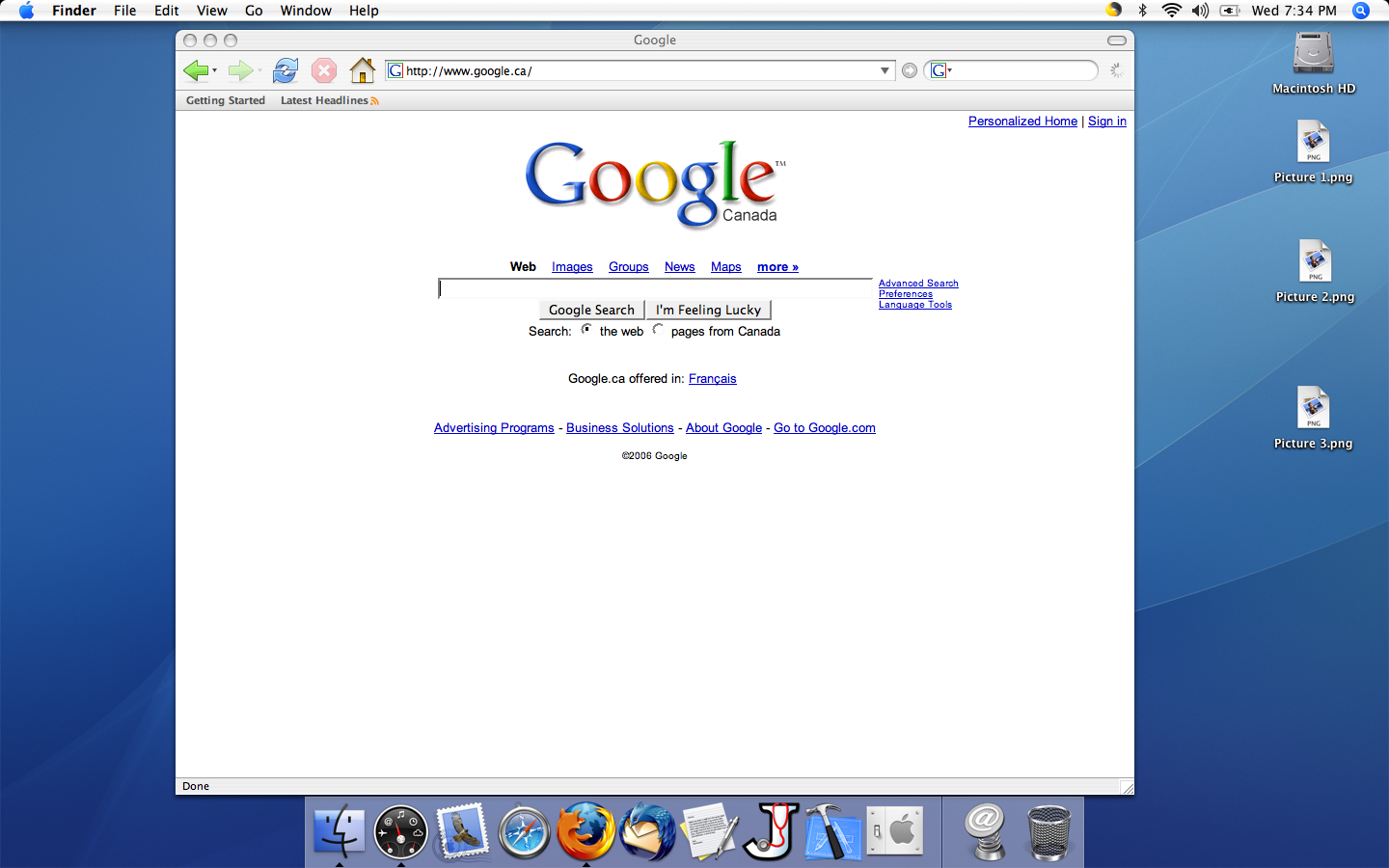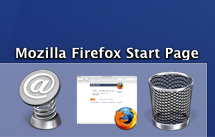
When you first login you are presented with a screen similar to the one below.

The top of the screen contains a menu bar. For any application you use this is where you will find the menu bars specific to the application (it is very similar to the File, Edit, View, etc that you are used to in Windows). The bottom contains several icons on what is called the Dock Bar.
This dock bar contains the most commonly used applications as well as all open applications. It allows you to quickly change between applications (similar to the "Taskbar" in Windows). Icons for the applications needed for coursework are pre-loaded into the Dock for you. The Dock also contains a Trash icon and may also contain icons of files. You can use the Dock to see which applications are open, as a black triangle appears below the icon of any open application. For example, in Figure 1 the "Finder" application is the only open application.

If you click on an icon, the corresponding application will become the active application. You don't need to worry about whether it is already running or not. If it is not running, clicking will both open the application and make it be the active application. You'll just have to wait a little longer than if the application is already running.
We will first click on the FireFox icon. Once we do this the icon begins to bounce. This means that the application is loading. While an application is loading you can do other things or simply wait for it to finish loading. Once it's done loading, the application will be displayed on the screen.
Once Firefox loads you will notice that the top menu bar has changed. It no longer says Finder. It now says FireFox. There is also a Bookmarks option and a few others. All of these options now pertain to FireFox. To close the application you simply click FireFox->Quit. Clicking outside FireFox shows that you are no longer using that application and the top menu bar switches back to Finder (Finder being an application similar to Explorer in Windows).

As another example, here is the menu bar for DrScheme:

The name of the active application (in the figure above, DrScheme) is in bold, and leads to a menu that allows you to quit the application. The Finder, discussed below, is an exception. The other menus depend on the application, but typically include the following menus and menu items:
The Apple menu is available no matter which application is active; it is accessed by clicking on the apple icon on the far left of the menu bar. You will use this menu to log out at the end of your session.
You will also notice three coloured circles in the top left corner of the Firefox application. These are similar to the three buttons located in the top right corner of all Windows applications. Red is close, yellow is minimize, and green is maximize/simplify. If you try minimizing Firefox it will go straight to the right of the dock bar.

Here is a closeup of a DrScheme title bar:

When you want the application back, simply click on it.
Each window has three buttons on the top left corner and diagonal lines on the bottom right corner. The button on the top right usually changes the appearance of the window such as by removing or adding a toolbar; this will depend on the particular application. The top edge of the window, slightly darker and labeled with the name of the file (if it has one), is the title bar.
Here are some ways to manipulate windows:
To close an application you would click the red button. If you do this then the application will disappear, butthe top menu bar will still indicate the program name! What has happened?
Mac OS X has closed the application, but it has not left memory. For example, if you had closed a Firefox window, this means that then next time you click the Firefox icon at the bottom, it will load more quickly. This can sometimes slow a computer down, so if you want to completely exit the program you must click Firefox->Quit.
You will also notice that if you do not exit, a black arrow appears under the Firefox application in the dock bar. This means that the program is either open and on the screen, minimized, or in memory. If there is no black arrow, as may be true of many of the other icons, this means the programs are neither open nor in memory.
Above we decribed how to use the dock to open applications. This is not the only way to open applications. You will notice in the top-right corner of the menu bar there is a blue magnifying glass. If you click on this, an option to type will appear. Here you can type in the name of the application you want and it will be found very quickly. This function is called Spotlight. In it you can type in more then just applications, you can also type in the names of documents, or any other file you wish to find and it will find it. It is so quick that it is the preferred method for many Mac OS X users for opening documents and applications. The screen below shows me typing in DrJava and it finds it for me. Now all I do is double-click on it and it will open it up.

The most commonly used applications will be on the dock bar. Ones to draw attention to are:
Feel free to play around with the system for a bit to get the hang of it.